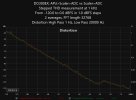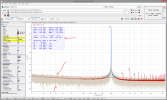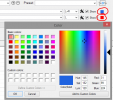There was a time I wanted to check the HUMP of the ES9822PRO. My conclusion that it has hump. I have another ADC by Nihtila which is based on AK5572 that gives the same performance without scaler as EIDA with scaler. More or less.
The Nihtila has a problem of rise of THD when one reaches close to it's 0dbfs (not as E1DA).
The reduction of the hump using the scaler is by 'holding' ES9822PRO input more or less fixed.
The Nihtila has a problem of rise of THD when one reaches close to it's 0dbfs (not as E1DA).
The reduction of the hump using the scaler is by 'holding' ES9822PRO input more or less fixed.




